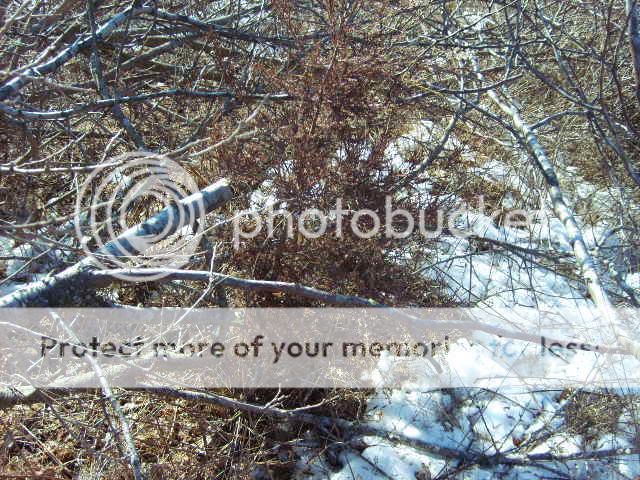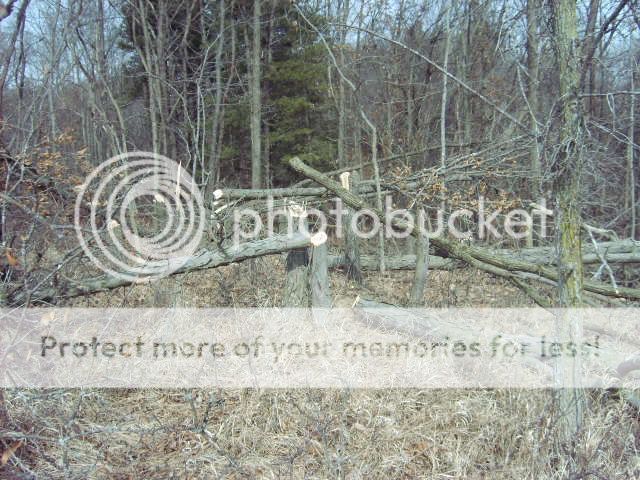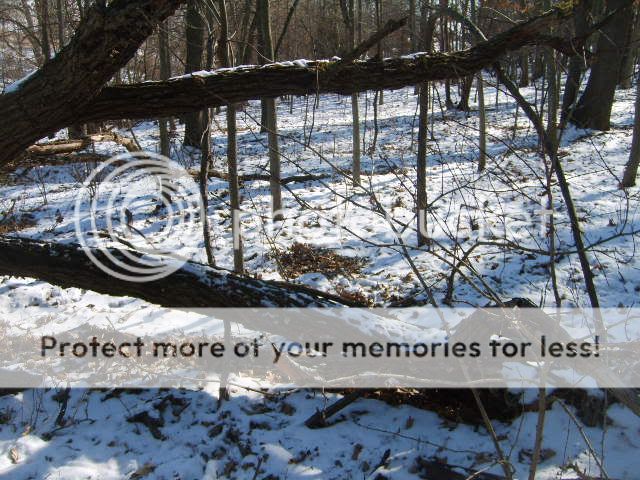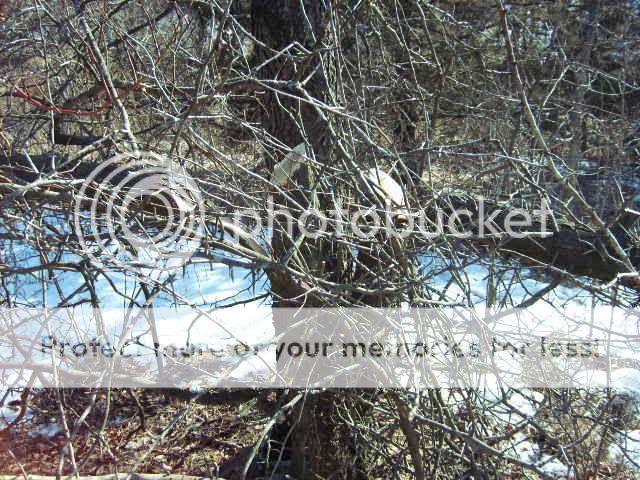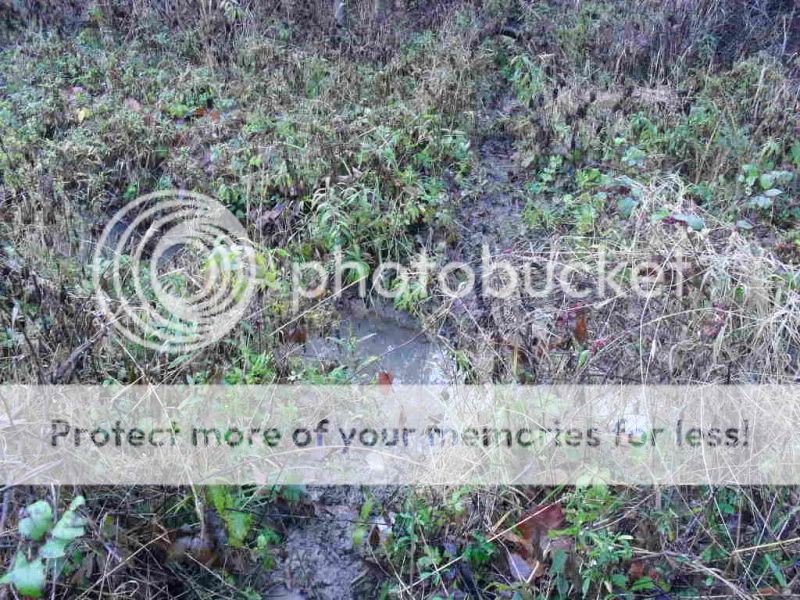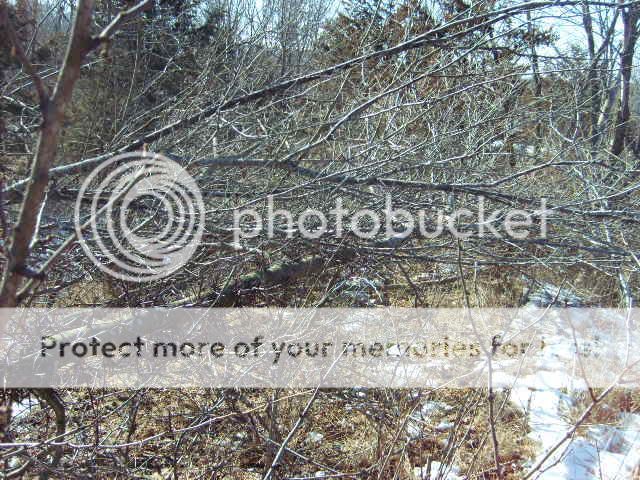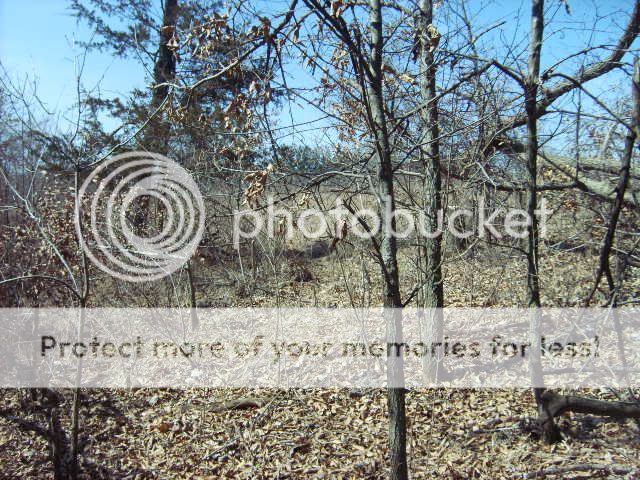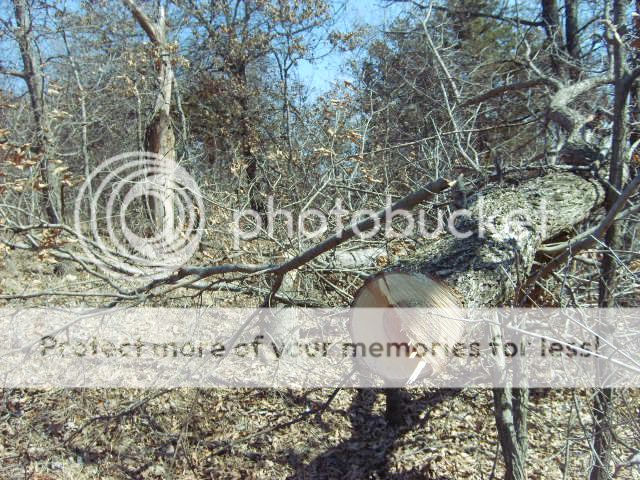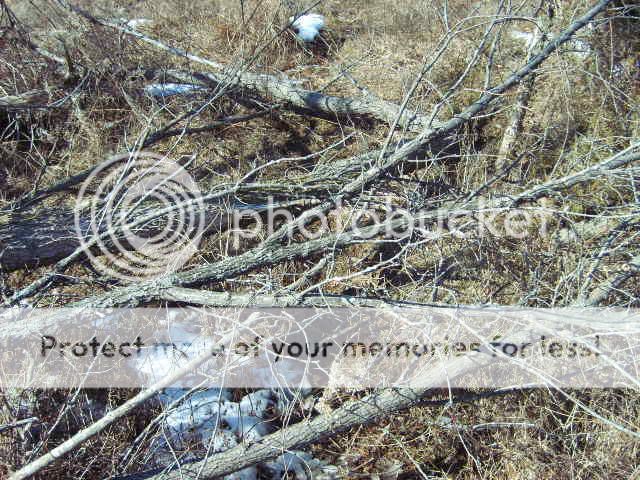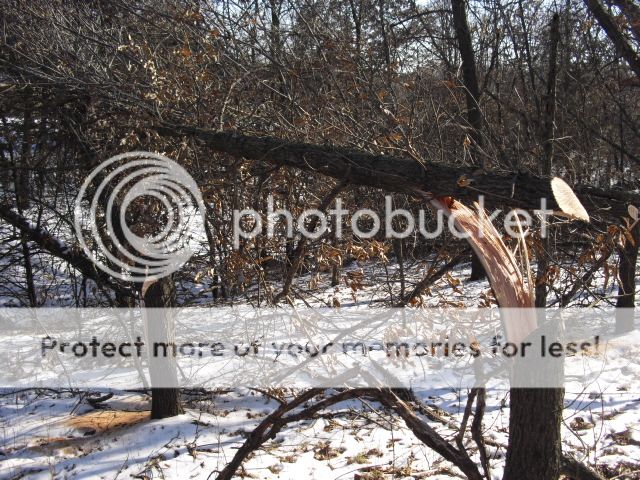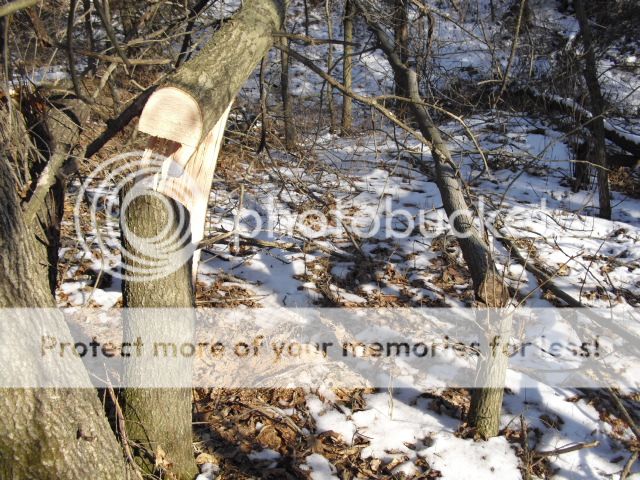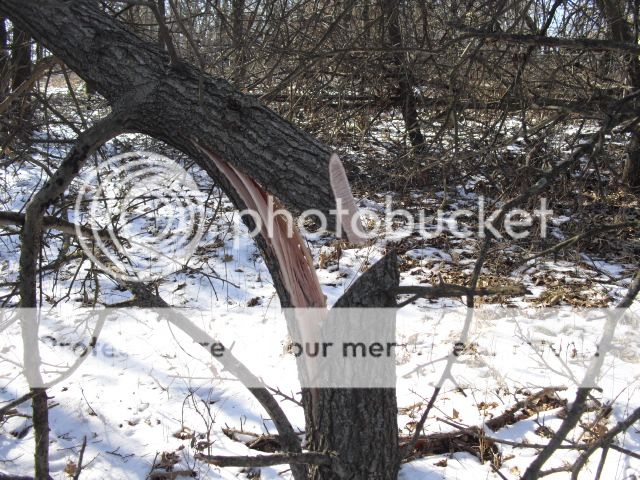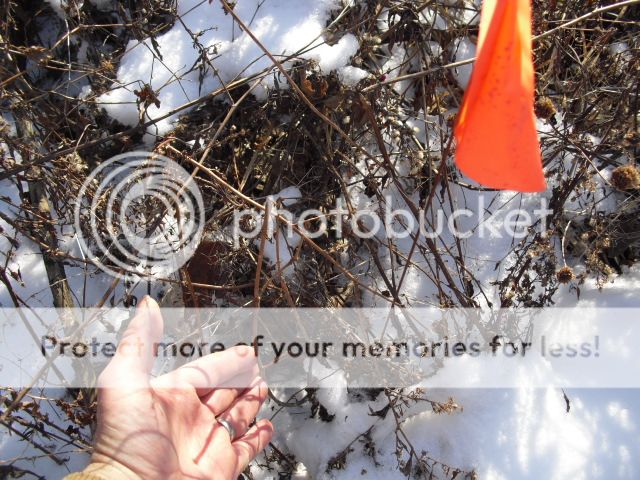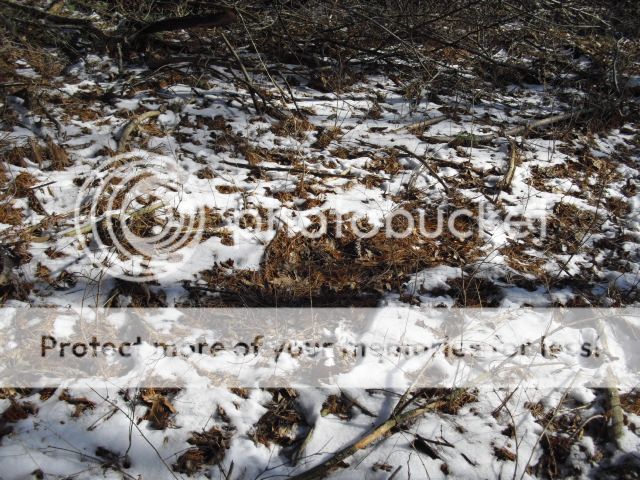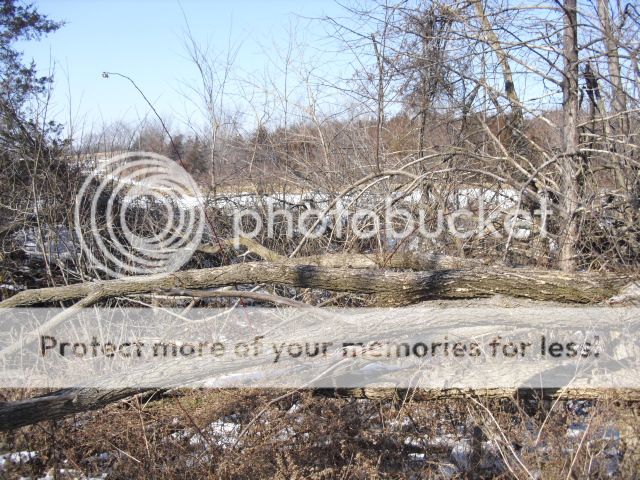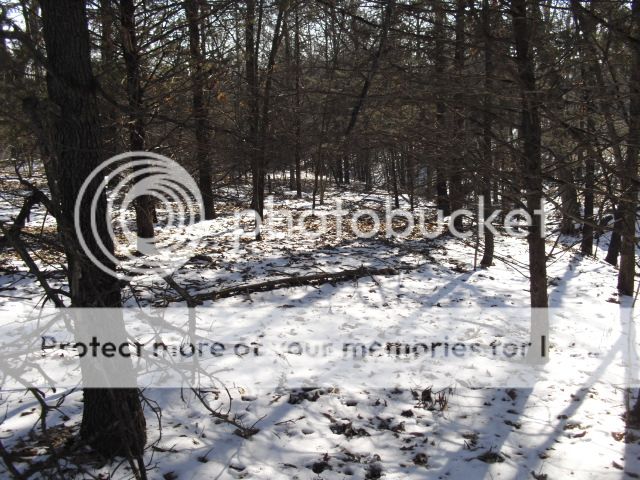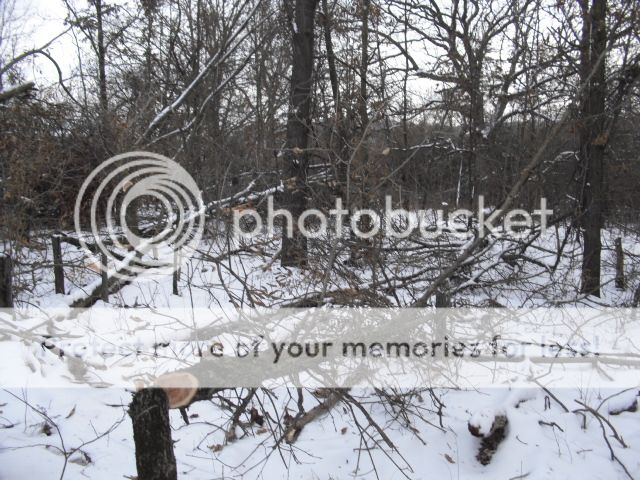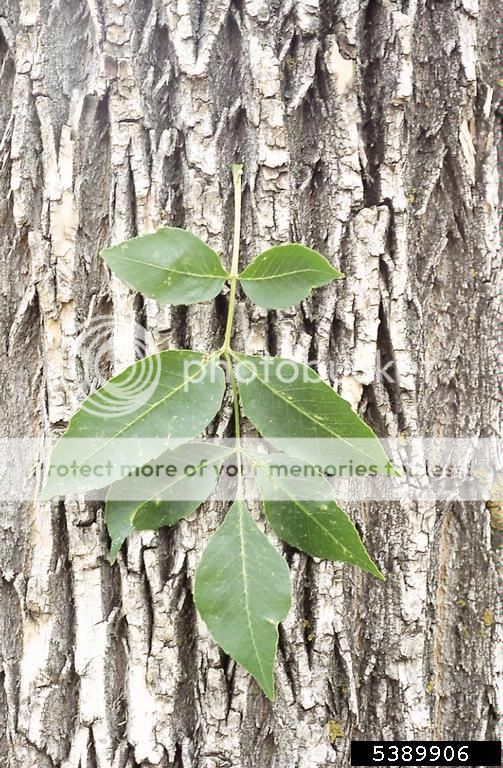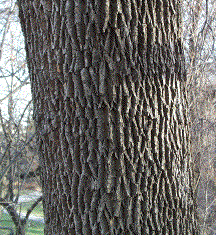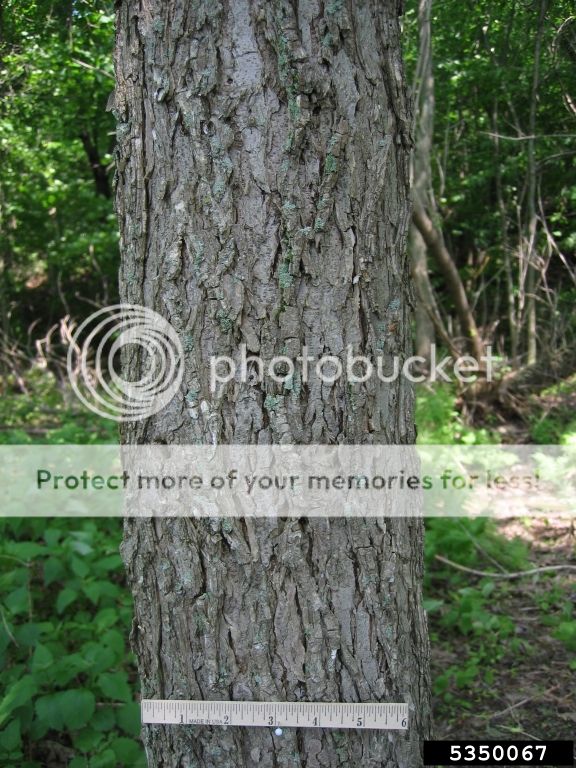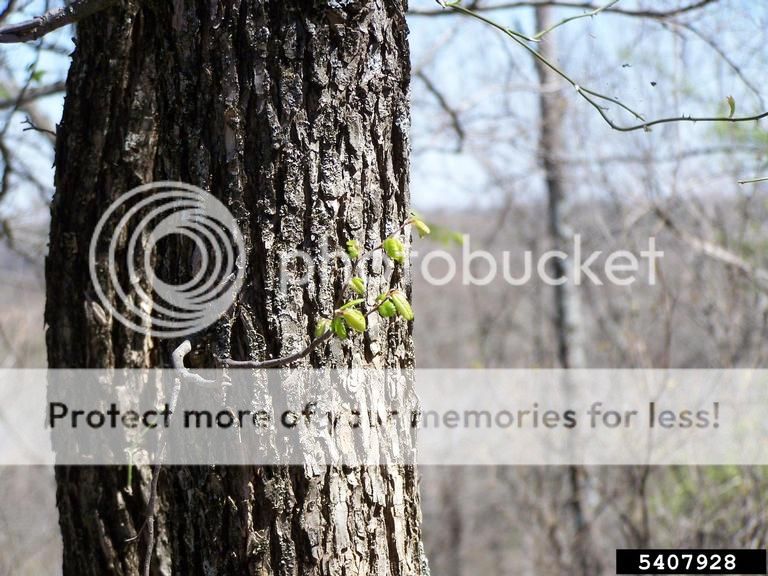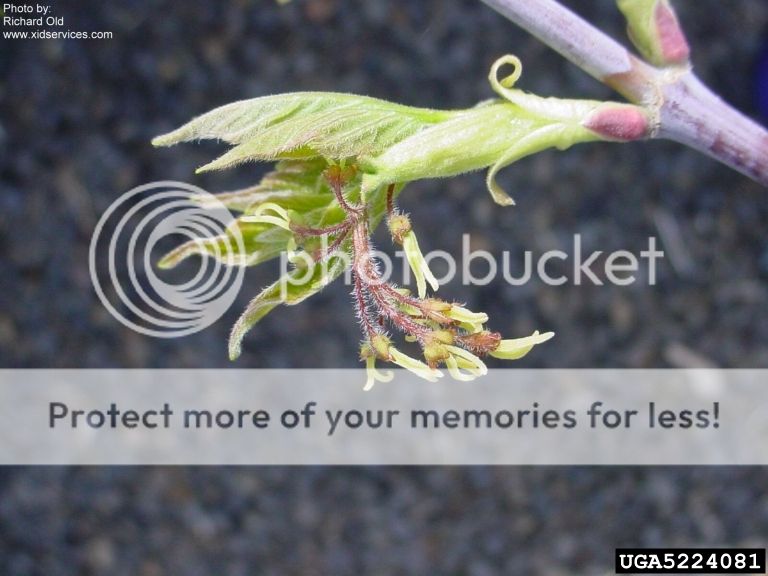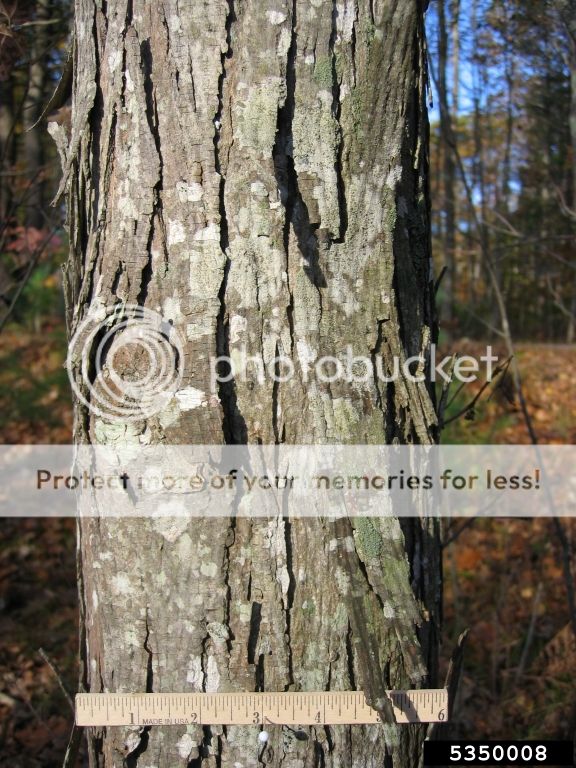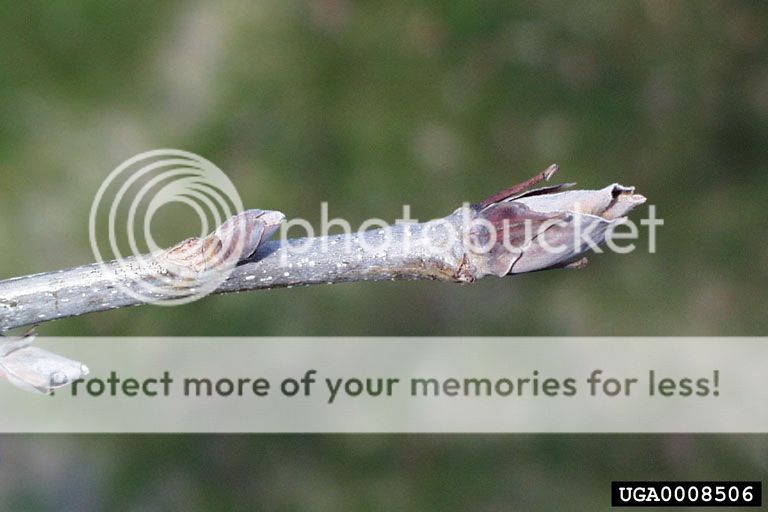Lost Arrow
Member
Note: I do not take credit for any of this information. Dbltree is the creator of these threads and I am simply putting them here to preserve them and share his knowledge. All information in these threads comes from Dbltree and Outreach Outdoors (http://www.outreachoutdoors.com/). All of this information comes from Dbltree's hinge cutting thread at Outreach Outdoors. I have not made any changes to the information other than putting it in order into one thread.
The term "hinge cut" refers to cutting partially through a small tree so that it can be tipped over but yet remain alive. Doing so can create hiding places where deer will bed, feeding places via browse from the downed tree top and shoots sent up from the stump. These downed trees also can be strategically cut to funnel deer past a stand.
This is an example of a hinge cut tree

Smaller trees generally are most conducive to hinging and some tree species more then others but attempting to hinge larger trees can be dangerous and it usually best to just tip them over leaving a 2-3 foot stump. Threes should be cut at this height to keep the tree off the ground to provide cover for bedded deer and other wildlife.
I would caution landowners to first contact your local forester, put together a Forest Stewardship program, and initiate a Timber Stand Improvement program first. Once crop trees are identified and marked (these will generally be white and red oak species) then cull trees can be girdled or tipped over via hinging without worry of killing valuable trees.
Look over various cost share options that can actually pay for "hinging"
Iowa only....REAP Practices must be approved by IDNR Forester and paid once inspected by the IDNR Forester and bill submitted.
TSI - Timber Stand Improvement 5 acre minimum - allowed $160 an acre X 75% =$120
Tree Planting - 3 acre minimum $600 allowed per acre X 75% = $450
Tree Planting/Weed Tree Removal - $160/$600 x 75% (weed tree removal may be less acres then total planted)
Federal Programs...these two have identical practices but EQIP practices allowed are different by county/state while WHIP is nationwide.
Environmental Quality Incentives Program (EQIP)
Wildlife Habitat Incentive Program (WHIP)
Check by State
The following is just a brief list of a few of the options available...check this link for the complete list and the payment rates.
2011 Iowa EQIP Practices and Payments
314 Brush Management (weed tree removal)
647 Early Successional Habitat Development/Management (Timber Edge Feathering)
490 Forest Site Preparation
666 Forest Stand Improvement (TSI or Weed Tree removal)
422 Hedgerow Planting
338 Prescribed Burning
391 Riparian Forest Buffer
612 Tree and Shrub Establishment
380 Windbreak or Shelterbelt Establishment
In all cases either the forester or NRCS Tech will need to inspect the finished practice before the operator/landowner can be paid. Usually a simple bill will suffice (10 acres TSI X $160 for example) but in some cases they will want an itemized (seedlings, herbicides, fuel, labor etc) that add up to the total cost share.
The federal programs are not cost share, just a payment per acre so slightly different then the state programs.
Talk with NRCS and your local forester/private land biologist for more details but even they get confused, so look over the links and be informed yourself!
The term "hinge cut" refers to cutting partially through a small tree so that it can be tipped over but yet remain alive. Doing so can create hiding places where deer will bed, feeding places via browse from the downed tree top and shoots sent up from the stump. These downed trees also can be strategically cut to funnel deer past a stand.
This is an example of a hinge cut tree

Smaller trees generally are most conducive to hinging and some tree species more then others but attempting to hinge larger trees can be dangerous and it usually best to just tip them over leaving a 2-3 foot stump. Threes should be cut at this height to keep the tree off the ground to provide cover for bedded deer and other wildlife.
I would caution landowners to first contact your local forester, put together a Forest Stewardship program, and initiate a Timber Stand Improvement program first. Once crop trees are identified and marked (these will generally be white and red oak species) then cull trees can be girdled or tipped over via hinging without worry of killing valuable trees.
Look over various cost share options that can actually pay for "hinging"
Iowa only....REAP Practices must be approved by IDNR Forester and paid once inspected by the IDNR Forester and bill submitted.
TSI - Timber Stand Improvement 5 acre minimum - allowed $160 an acre X 75% =$120
Tree Planting - 3 acre minimum $600 allowed per acre X 75% = $450
Tree Planting/Weed Tree Removal - $160/$600 x 75% (weed tree removal may be less acres then total planted)
Federal Programs...these two have identical practices but EQIP practices allowed are different by county/state while WHIP is nationwide.
Environmental Quality Incentives Program (EQIP)
Wildlife Habitat Incentive Program (WHIP)
Check by State
The following is just a brief list of a few of the options available...check this link for the complete list and the payment rates.
2011 Iowa EQIP Practices and Payments
314 Brush Management (weed tree removal)
647 Early Successional Habitat Development/Management (Timber Edge Feathering)
490 Forest Site Preparation
666 Forest Stand Improvement (TSI or Weed Tree removal)
422 Hedgerow Planting
338 Prescribed Burning
391 Riparian Forest Buffer
612 Tree and Shrub Establishment
380 Windbreak or Shelterbelt Establishment
In all cases either the forester or NRCS Tech will need to inspect the finished practice before the operator/landowner can be paid. Usually a simple bill will suffice (10 acres TSI X $160 for example) but in some cases they will want an itemized (seedlings, herbicides, fuel, labor etc) that add up to the total cost share.
The federal programs are not cost share, just a payment per acre so slightly different then the state programs.
Talk with NRCS and your local forester/private land biologist for more details but even they get confused, so look over the links and be informed yourself!
Last edited:












